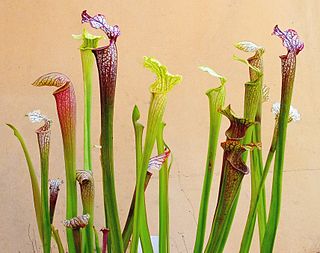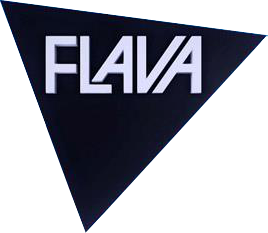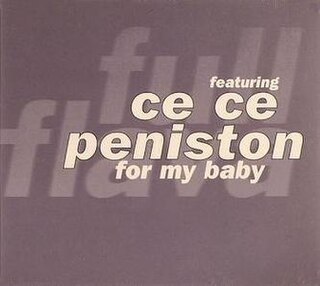
Hemichordate is a phylum of marine deuterostome animals, generally considered the sister group of the echinoderms. They appear in the Lower or Middle Cambrian and include two main classes: Enteropneusta, and Pterobranchia. A third class, Planctosphaeroidea, is known only from the larva of a single species, Planctosphaera pelagica. The extinct class Graptolithina is closely related to the pterobranchs.

The western yellow wagtail is a small passerine in the wagtail family Motacillidae, which also includes the pipits and longclaws.
Bongo flava is the nickname for Tanzanian hip hop music. The genre developed in the 1990s, mainly as a derivative of American hip hop, with additional influences from reggae, R&B, afrobeat, dancehall, and traditional Tanzanian styles such as taarab and dansi, a combination that forms a unique style of music. Lyrics are usually in Swahili or English.

Sarracenia is a genus comprising 8 to 11 species of North American pitcher plants, commonly called trumpet pitchers. The genus belongs to the family Sarraceniaceae, which also contain the closely allied genera Darlingtonia and Heliamphora.
Tanzanian Hip-hop, also known as Bongo Flava, encompasses a large variety of different sounds, but it is particularly known for heavy synth riffs and an incorporation of Tanzanian pop. There is some debate over whether Bongo Flava, which has emerged as a defined pop movement, can really still be qualified under the overarching term "hip hop" and not a movement unto itself, when it is beginning to develop a distinctive sound that differs from hardcore rap or, for example, the Maasai Hip-hop of X Plastaz, who use the tradition of the Maasai tribe as the focal point for their sound and style. A form of Tanzanian hip hop is Bongo Flava. Bongo flava, derived from the Swahili word "ubongo", incorporates hip hop, Indian filmi, taraab, muzik wa dansi, and dancehall beats. It all began in the 1980s when Tanzanian teenagers were really interested in the American hip hop scene. At first, they took American beats and rapped to them. As the youth rapped, the hip hop in Tanzania began to develop into a mix of traditional and localized hip hop scene. As a result, it began a wave of interest from other people in Eastern Africa.

Flavas is an American line of fashion dolls created by Mattel in 2003. They are multi-ethnic and have an urban, hip hop style with "bling-bling" jewellery and stick-on tattoos, described as "ghetto-fabulous" by Newsweek. They were designed to appeal to tweens and compete with the widely successful Bratz dolls. They were marketed as "reality-based" and "authentic" and have more points of articulation than traditional fashion dolls for more expressive posing.

Israel Houghton is an American Christian music singer, songwriter, producer and worship leader. Houghton is usually credited as Israel & New Breed.
The Wych Elm cultivar Ulmus glabra 'Flava' was listed in the Dieck catalogue of 1887 as U. scabra f. flava, but without description. The tree should not be confused with Ulmus flavaMichx. a probable misspelling of Ulmus fulva, a synonym of U. rubra, the Slippery or Red Elm from North America.

The hepatic tanager is a medium-sized American songbird. Formerly placed in the tanager family (Thraupidae), it and other members of its genus are now classified in the cardinal family (Cardinalidae). The species's plumage and vocalizations are similar to other members of the cardinal family.

"What's Your Flava?" is a song recorded by British singer Craig David. It was released on 28 October 2002 as the first single from his second studio album Slicker Than Your Average (2002). It peaked at number eight on the UK Singles Chart. Despite only peaking at number 104 on the US Billboard Hot 100, a much lower position than previous singles "Fill Me In" and "7 Days", it was included on the soundtrack for the 2003 American film What a Girl Wants.

Flava was a British hip-hop music television channel owned and operated by Sony Pictures Television.

Nepenthes flava is a tropical pitcher plant endemic to northern Sumatra, where it grows in montane forest at 1800–2200 m above sea level.

"Thank You" is a New jack swing song released by American R&B/soul-singing group, Boyz II Men in 1995. "Thank You" was co-produced by Dallas Austin and Boyz II Men, and the song was released as the third single from Boyz II Men's second studio album, II. "Thank You" did not perform as well as its predecessor and reached a peak position of #21 on the US Billboard Hot 100 and the Hot Singles Sales on March 18, 1995, and March 25, 1995, respectively, and also reached #17 on the US Billboard Hot R&B/Hip-Hop songs. "Thank You" performed moderately well in the UK eventually peaking at #26 on the UK Singles Chart. "Thank You" also peaked at #17 on the New Zealand RIANZ singles chart, #27 on the French singles chart and #33 on the Australian ARIA Singles Chart. The album version of the song is a cappella, consisting only of sounds created by the human voice, bringing to mind one of their first hit songs, "Motownphilly".

Flava Works, Inc. is a company that produces gay media featuring black and Latino men. Its headquarters are in Miami, Florida, and it has a satellite office in Chicago, Illinois.

Flava is the fifth overall single from Peter Andre's second studio album, Natural. The track features a rap by American rapper Cee. The track spent one week at number one on the UK Singles Chart in 1996. It was Andre's first number one single in the UK, as well as the first number one song written by co-writer Wayne Hector, who has gone on to write over 30 chart-topping hits for artists around the world.

Anomis flava, the cotton looper, tropical anomis or white-pupiled scallop moth, is a moth of the family Erebidae. It is found in large parts of the world, including China, Hawaii, São Tomé and Príncipe, the Society Islands, Thailand, New Zealand, and Australia. Subspecies Anomis flava fimbriago is found in North America.

Flava is a New Zealand Hip Hop and contemporary R&B music radio network. The network is owned by NZME Radio, and is operated and produced from the company's Auckland offices and studios on Graham Street. It competes directly with MediaWorks New Zealand's Auckland long-running urban music station Mai FM.

"For My Baby" is a song by Full Flava featuring CeCe Peniston, written and produced by Rob Derbyshire and Paul "Solomon" Mullings. Dance remixes of the composition were based on a sample of "Heartache No. 9", the Delegation hit single, which scored at number fifty-seven in US Dance and number sixty-six on US R&B chart.

Sybra is a genus of beetles in the family Cerambycidae, containing the following species:

Sybra ordinata is a species of beetle in the family Cerambycidae. It was described by Bates in 1873.

















